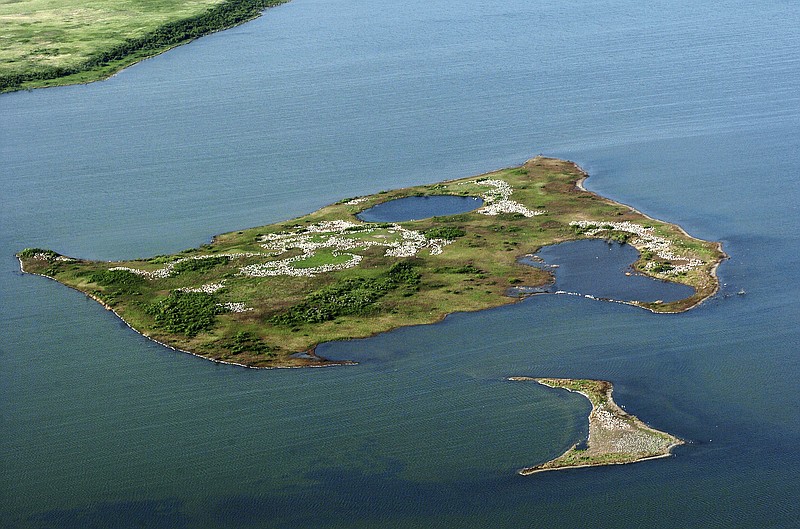BISMARCK, N.D. (AP) - Abnormally dry weather may bedevil farmers and ranchers, but is a boon for American white pelicans nesting on a North Dakota island known as North America's largest refuge for the big-billed birds.
A dry spell appears to have curbed years of wet weather and surging water levels that threatened to swamp the main nesting island at the Chase Lake National Wildlife Refuge, said Neil Shook, a U.S. Fish and Wildlife Service biologist and refuge manager.
"The rising water was concerning," said Shook, who estimated the island has shrunk by half in recent years, to 12 acres, or about a dozen football fields.
But the big birds, some of the largest in North America measuring 6 feet from bill to tail, still have plenty of nesting room, and an aerial survey completed this week showed some 27,120 breeding adults have returned from as far away as California and the Gulf Coast to raise their chicks.
The count, which is down about 6,600 birds from last year, still is among the highest recorded at the 4,385-acre refuge north of Medina. A record 35,466 birds were counted at the refuge in 2000.
The pelicans normally begin arriving in North Dakota in April and stay through September, raising their young and feasting at small prairie ponds within a 100-mile radius of the refuge. Chase Lake historically has high alkaline levels that make it unable to support aquatic life.
The main nesting island was first used by pelicans in the early 1990s after an island previously preferred by the pelicans was swamped by rising lake water. But other islands over the decades have cropped up when parts of peninsulas are flooded.
Shook said small colonies of nesting pelicans also have taken hold in the past few years in nearby Devils Lake and at the Audubon National Wildlife Refuge in central North Dakota.
Shook said it's unclear whether the shrinking nesting island at Chase Lake has caused to pelicans to relocate there.
The pelicans have puzzled biologists before.
In 2004, nearly 30,000 pelicans departed the Chase Lake refuge, leaving their chicks and eggs behind. A year later, the refuge saw a massive die-off of pelican chicks, followed by an exodus of their parents.
Predators, weather, diseases and other factors were considered but biologists have never pinpointed the cause of the pelican deaths and departures. Shook said that it may have just been a natural correction.
Since that scare, the population has remained healthy and hundreds of people continue to visit the refuge each year to see the nesting site from afar or in flight, where the acrobatic birds with a 10-foot wingspan are hard to miss.
"We know (pelicans) are a draw and something that motivates people to travel to North Dakota," said Mike Jensen, a spokesman for the state tourism department.
Sherry Leslie, who heads a North Dakota birdwatching club, said viewing the pelicans also is exciting for locals.
"People think of pelicans out in the ocean and don't think they are in a state like North Dakota," she said. "It's just a neat feeling seeing them circling around. You never get tired of seeing them."
Pelicans have been monitored at Chase Lake since 1905, when the birds numbered about 50. U.S. President Theodore Roosevelt designated the site as a bird refuge in 1908, when many of the birds were being killed for their feathers or for target practice.
Biologists have been doing aerial surveys of the nesting grounds since 1972. They use photographs scanned into a computer program to count the number of nests. The white pelican lives for about 25 years and breeds only once a year. Males and females take turns caring for their young. Typically, two eggs are laid in each nest, but only one chick survives.
